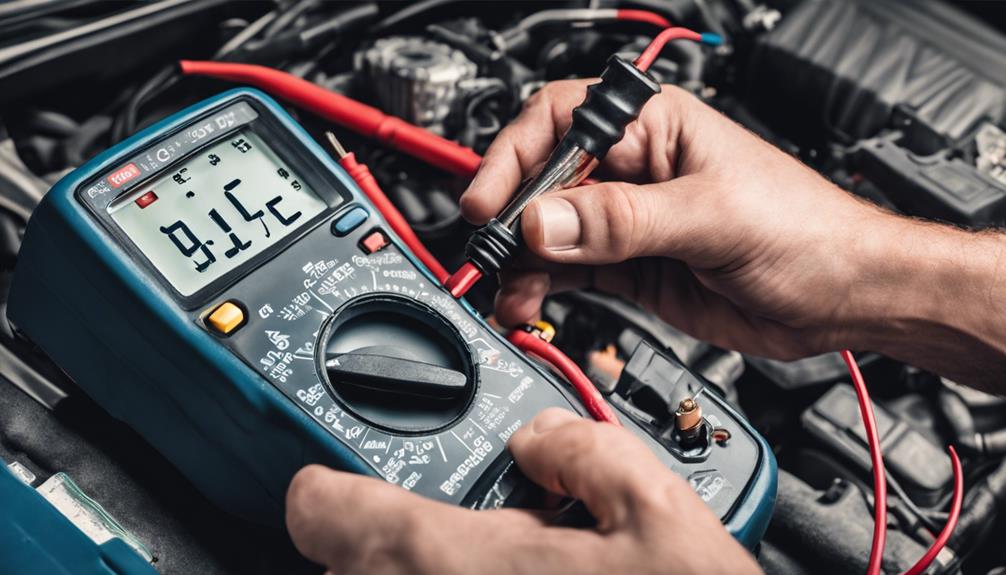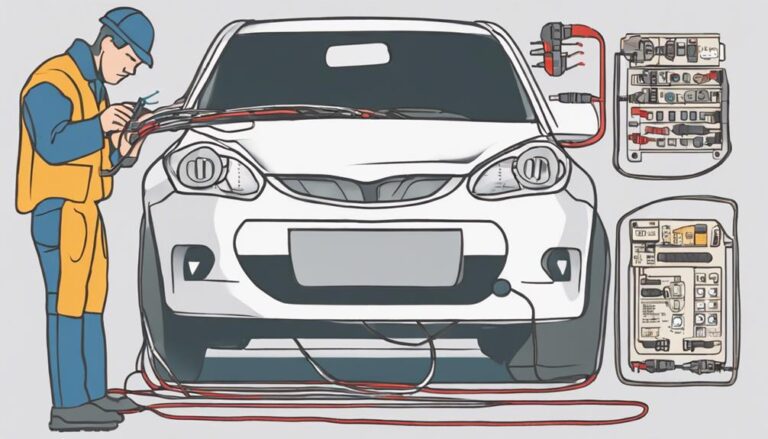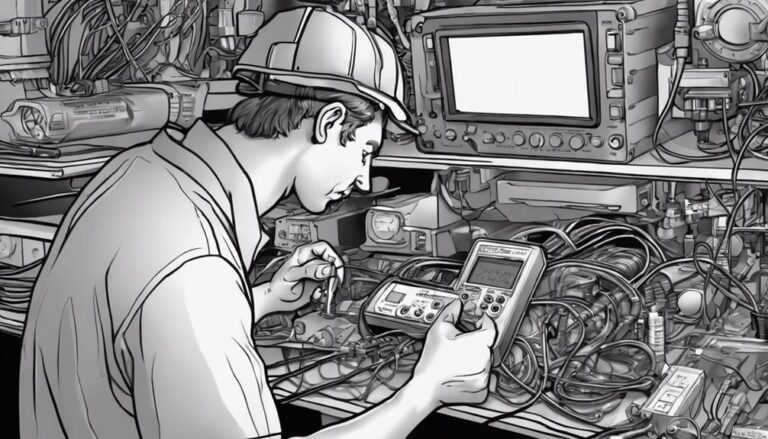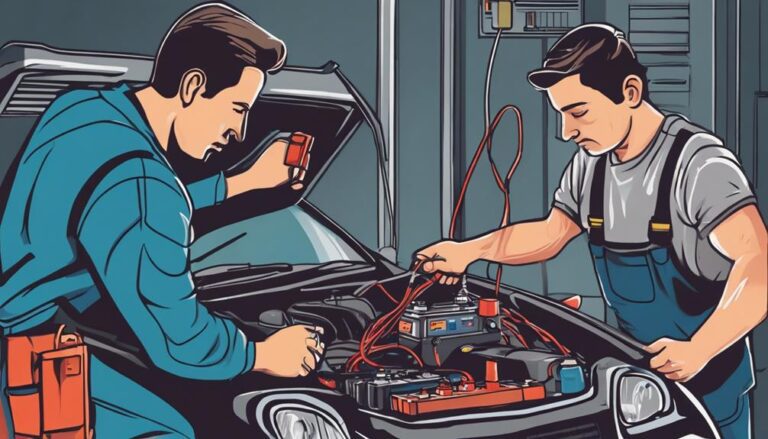Diagnosing Car Battery and Alternator Issues: A Guide
If you've ever been caught off guard by a sudden car battery or alternator issue, you know how frustrating and inconvenient it can be.
But what if you could unravel the mystery behind these electrical system woes and equip yourself with the knowledge to handle them effectively?
Understanding the nuances of diagnosing car battery and alternator problems could save you time, money, and the hassle of unexpected breakdowns.
Discover practical tips and essential insights that will empower you to take charge of your vehicle's electrical health and keep you rolling smoothly down the road.
Key Takeaways
- Regular maintenance is crucial for optimal battery performance and longevity.
- Recognize symptoms like dimming headlights and corrosion for timely intervention.
- Check battery voltage and alternator output to diagnose issues accurately.
- Proactive monitoring and preventive measures help maintain a healthy electrical system.
Understanding Car Battery Functions
Understanding the essential functions of your car battery is crucial for maintaining proper vehicle operation and performance. Your battery plays a vital role in supplying the initial energy needed to start the vehicle, powering critical components such as the starter and ignition coil. Additionally, it serves as a backup power source for vehicle accessories and can even power these accessories when the engine isn't running. When starting your car, the battery typically provides 400-600 amps of power, highlighting its importance in the electrical system essentials of your vehicle.
To ensure your battery functions optimally, regular battery maintenance is essential. This includes monitoring the battery's charge level, terminals, and overall condition. Since car batteries are designed for quick discharge and recharge cycles to support frequent engine starts, understanding these battery maintenance practices can help prolong its lifespan. Despite its limited lifespan of around 3-5 years due to chemical degradation and usage factors, proper care can ensure reliable performance from your car battery.
Identifying Bad Battery Symptoms
Recognizing signs of a failing car battery is crucial for timely maintenance and avoiding unexpected breakdowns on the road. Dim headlights and dashboard lights that seem to be losing intensity are common indicators of a bad battery. If you notice corrosion on the battery terminals, it could also be a sign that your battery is failing. An aging battery that struggles to hold a charge or fails to start your vehicle reliably may need attention. Keep an eye out for electronic components behaving erratically, such as the radio cutting in and out, as this could be a symptom of a faulty battery. Additionally, a swollen battery, often caused by overcharging from the alternator, is a clear sign of a bad battery.
To confirm if your battery is indeed the issue, testing methods like load testing or using a multimeter can help assess its health. Regular maintenance, such as cleaning the battery terminals and ensuring secure connections, can prolong the life of your battery. By staying vigilant for these symptoms and following maintenance tips, you can address battery issues proactively.
Recognizing Alternator Malfunction Signs

When driving, dimming headlights can be a warning sign that your vehicle's alternator may be malfunctioning, affecting the electrical system. Another indicator of alternator issues is a burning rubber smell in the engine compartment, which could signal belt or wiring problems. If the dashboard warning light for the battery or charging system illuminates, it points towards possible alternator malfunctions. Engine stalling or irregular idling may also be linked to an alternator not properly charging the battery. Failure to keep the battery adequately charged can lead to electrical failures in the vehicle. To diagnose alternator problems, you can check voltage levels and test connections. Here is a table summarizing signs of alternator malfunction:
| Signs of Alternator Malfunction | Description |
|---|---|
| Dimming Headlights | Indicator of potential alternator issue |
| Burning Rubber Smell | Signaling belt or wiring problems |
| Dashboard Warning Light | Points towards possible alternator issues |
| Engine Stalling or Irregular Idling | Linked to improper battery charging |
Troubleshooting Battery and Alternator Issues
If you suspect issues with your car's battery or alternator, taking proactive steps to troubleshoot these components is crucial for maintaining your vehicle's electrical system's functionality.
Here are three key actions to help you diagnose battery and alternator problems effectively:
- Check Voltage Fluctuations: Use a multimeter to test the battery voltage. A good battery should read around 12.6 volts. Any significant deviations from this value may indicate a battery issue that needs attention.
- Inspect Charging System: Measure the alternator output voltage between terminals. The ideal range for a properly functioning alternator is between 13-14.5 volts. Deviations from this range could point towards alternator problems affecting the charging system.
- Evaluate Amperage Output: Test the alternator for correct amperage output under load conditions to ensure optimal performance. This step helps determine if the alternator is capable of meeting the electrical demands of your vehicle.
Taking Control of Electrical System Problems

To effectively manage electrical system problems in your vehicle, it's essential to take proactive measures in diagnosing and addressing potential issues with the car battery and alternator. Preventive maintenance plays a crucial role in ensuring the longevity and efficiency of your vehicle's electrical system.
By conducting regular checks for signs of wear and tear on the battery, such as dim headlights and check engine lights, you can catch potential problems early on. Similarly, monitoring the alternator for symptoms like dimming headlights and unusual smells can help prevent costly repairs down the line.
Utilizing diagnostic techniques, such as testing the alternator output voltage and observing dashboard warning lights, can aid in pinpointing issues before they escalate. Remember to engage in regular maintenance practices like keeping terminals clean and avoiding short trips, as these simple steps can go a long way in preventing electrical system malfunctions.
Frequently Asked Questions
How Do You Know if the Problem Is the Alternator or Battery?
If you're unsure whether it's the alternator or battery, consider a voltage drop test. This diagnostic tool measures the electrical system's performance, helping pinpoint issues. Ensure liberation by addressing the problem accurately and efficiently.
How Can I Test My Alternator and Battery?
To test your alternator and battery, check the charging system's voltage drop. Measure the alternator output at 13-14.5 volts and the battery at 12.6 volts. Ensure a healthy amperage output under load. Drive longer for recharge.
Is It My Battery or Alternator or Starter?
Wondering if it's your battery, alternator, or starter? Start by troubleshooting the starter. Conduct electrical system diagnostics to pinpoint the issue accurately. Observing the symptoms during starting can guide you to the solution.
Can a Bad Battery Cause an Alternator to Read Bad?
If your battery voltage is off, it can mess with the charging system, making the alternator seem bad. Address the battery first; it might fix the alternator issue too. Don't assume the alternator's the root cause.
Conclusion
In conclusion, by staying vigilant and addressing early warning signs, you can enjoy smooth rides and avoid unexpected breakdowns caused by battery and alternator issues.
Keep an eye out for subtle changes in your vehicle's performance and take proactive steps to maintain its electrical system.
Remember, a little care goes a long way in ensuring your car's reliability and safety on the road.
Drive smart, drive safe.







